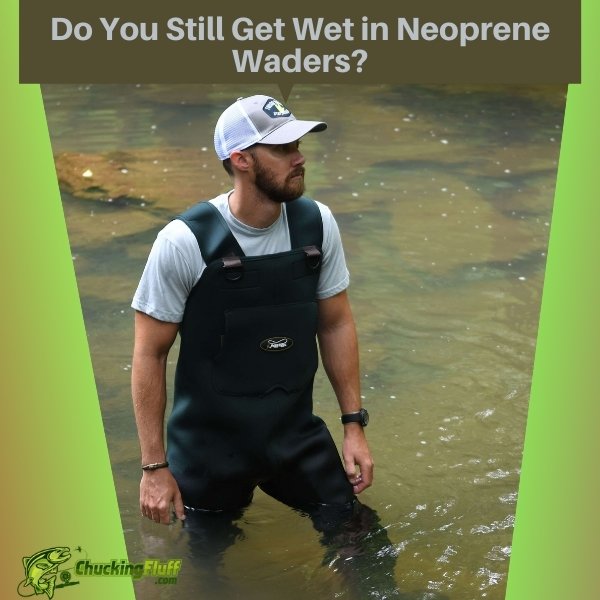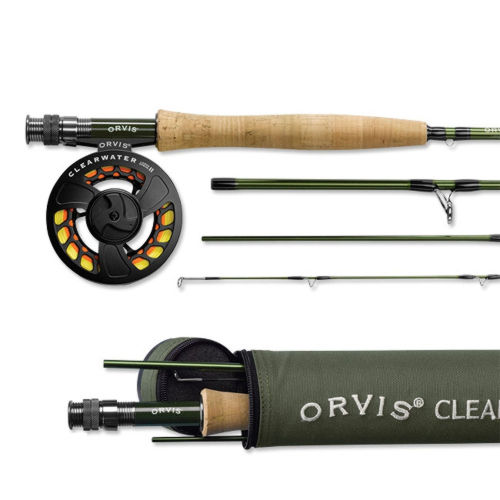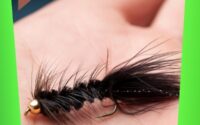| Disclosure: Just to be open and honest the buttons and links you click on in the website will in most cases take you to another website where you can purchase the products I am reviewing. As an Amazon Associate I earn from qualifying purchases. |
Do You Still Get Wet in Neoprene Waders?

Summer fly fishing is characterized by few layers, shorts, and more breathable gear.
Then the mercury drops, we dust our waders ready to brace the cold because it can be a goliath that needs tact to defeat.
Getting wet is part of the sport but we have limits since it can get uncomfortable, freezing, and unbearable when temperatures drop.
Do you still get wet in neoprene waders?
Yes, and No! The circumstances determine how dry you will be.
Generally, neoprene waders are considered waterproof, so if all factors are put in check and your vigor is under control, you’ll hardly get wet.
But some scenarios like deeply punctured neoprene waders, oversizing in the chest area, and other factors will see you wet – worse is drenched because Mother Nature loves to take her course.
Neoprene waders are excellent for casting in frigid times because of their thick insulation and durability.
These are built to be 100% waterproof to keep you as dry as a bone as the insulation warms your body to prevent frost bites and cold-related illnesses.
Neoprene waders allow you to fish in waters with chest high levels but things could take a turn if your waders leak.
Quick Post Navigation
Do You Still Get Wet in Neoprene Waders?
All factors considered, you shouldn’t get wet in neoprene waters – especially if we are talking about moisture entry from the outside to the interior of your waders and to the underneath layers.
These are perfect for anglers who love casting in colder weather, rough waters, ravines, waters with rapids and swift currents, and for the adventurous angler who loves exploring unfamiliar waters with sudden drop-off points and dips.
But we’ll learn how you can get wet in neoprene waders.
Are Neoprene Waders Waterproof?
Neoprene waders are waterproof, thanks to their dense rubber material that doesn’t allow moisture in or out of them.
For waterproofing, these are excellent for preventing water from getting into your underneath layers but can be miserably dangerous when your legs begin to sweat.
These lack breathability, something the Gore-Tex waders are known for – moisture wicking properties + waterproofing capabilities.
It will need a smart angler to get a dryer experience from neoprene waders, especially if wearing them for long hours.
That doesn’t mean you can’t sweat in breathable waders.
There is sweating but comfort levels are higher in them than neoprene waders in the same circumstances.
Ways You Can Get Wet in Neoprene Waders
There are several ways you can get wet in neoprene waders, some which could be your doing and others from the manufacturer’s end.
Regardless of the cause, it is never a good experience being in wet neoprene waders especially when you need to hike back to your location and have no change of clothes.
Deep Punctures and Tears
Anything sharp could cause deep tears and punctures to neoprene waders.
These are made from rubber and could be torn by flying hooks, intentional harm if exposed to children with sharp tools, and tougher thorny thickets.
Any unnecessary spaces caused by the above will lead to wader leakage and wetness if the affected area is immersed in water.
The same could happen to repaired areas that weren’t fully sealed and waterproofed.
Gaps and Holes in Seams
Gaps are common in parts where fabrics are joined as a result of weakening glue.
Rarely will you find such occurrences as a manufacturing defect, but we’ve read few reviews like these before.
Do you still get wet in neoprene waders with holes?
Yes. Holes could be from skipped stitching at the warehouse that allow entry or water into the waders if exposed.
Such can be mitigated by proper quality control before dispatching products for sale.
You can always get a replacement if your neoprene waders are still within the warranty duration.
More Ways Through Which You Can Get Wet in Neoprene Waders
Bootfoot neoprene waders have been a thing and some anglers love them.
However, disaster begins when you use studs on your boots to add traction for slippery bottoms.
Using longer studs than recommended can puncture the neoprene stocking and allow water to seep through.
Depending on the number of studs you use and how long you’ll be deep in water, wetness can be drastic.
Check the sizing of chest-high neoprene waders and confirm with your measurements to ensure you get a snug fit at the edge.
You want to reduce any chances of water getting into your waders through the chest area in case of splashes or if you fall in water.
In case you have some which are slightly oversize, use waterproof fabric tape to somewhat seal the region.
FAQs on Getting Wet in Neoprene Waders
Such a nasty feeling getting wet in neoprene fishing waders!
Here are some answers to questions that might help you decide when and how to use this gear.
Q) Can Sweat Make You Get Wet in Neoprene Waders?
A) It depends on how much you perspire.
Heavy sweaters from the slightest activity are at high risk of getting wet, especially if they’ll be out for long.
Wearing absorbent layers works shortly because with time, these become drenched and you’ll be uncomfortable.
Moisture wicking layers aren’t the solution too because these release moisture from your body to the waders, which isn’t right if you are aiming at remaining dry and warm.
Q) How Else Can You Prevent Neoprene Fishing Waders From Flooding?
A) Wearing a wading belt should help prevent water from moving down the waders to your feet.
Once you notice wetness in the upper body with your belt on, get out of water open the chest waders while retaining the belt to pour and wipe excess water.
Q) How Do You Dry Wet Neoprene Waders?
A) You can use a fan or dryer to evaporate standing water if you need to use your waders urgently.
But, be careful of the temperatures as these are easily flammable.
Some anglers have reported using a dry towel to dry waders in crevices and pockets.
But if you don’t need them quick, hang them in a cool and dry place away from direct sunlight for the best results.
Wrap Up
Do you still get wet in neoprene waders even with their waterproof nature?
Yes! Circumstances like deep puncturing, manufacturing defects like holes or gaping seams, and wearing oversize neoprenes can cause wetness.
Most of them are user problems and some reasons too why your neoprene waders could leak.


